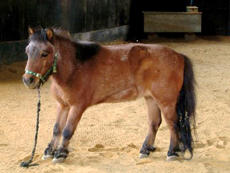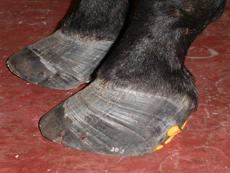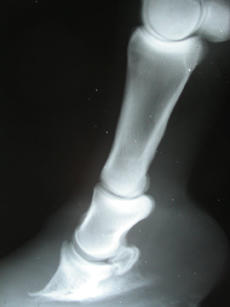Laminitis or “Founder” that is associated with Equine Metabolic Syndrome
EMS is often undiscovered until the horse or pony develops laminitis (“founder”). “Laminitis” means inflammation of the lamina, which is the tissue that attaches the hoof to the coffin bone in the foot. Mild episodes of laminitis can be confused with sole bruising, arthritis, or foot soreness following trimming or shoeing. Clinical laminitis results in lameness and sometimes changes in the coffin bone of the foot on radiographs (x-rays). Subclinical laminitis (horse may not be lame) is characterized by divergent growth rings on the hooves, separation at the white line near the toe, or rotation of the coffin bone on radiographs in the absence of lameness. Laminitis is frequently triggered by a dietary change, such as sudden pasture turnout or during the spring when the grass is green and growing rapidly. The link between insulin resistance, equine metabolic syndrome and laminitis is currently not completely understood.



*This project was supported by Agriculture and Food Research Initiative competitive grant no. 2009-55205-05254 from the USDA National Institute of Food and Agriculture Animal Genome Program.